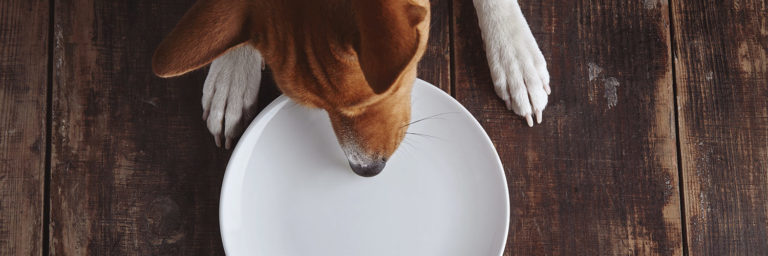Best Essential Oils for Dogs : 14 Natural Remedies for Common Ailments

Contents of Article
Essential oils are the aromatic compounds of certain plants which are known to provide certain benefits. These oils are so named because they contain the “essence” of the plant.
In recent years, essential oils have become an increasingly popular element in natural and herbal remedies for people – they have even started to gain popularity as a natural treatment for pets.
As is true for any product you use on your pet, make sure you take the time to research essential oil treatments for dogs before you use them.
Many essential oils provide significant health benefits but, if you use them incorrectly, you could be putting your dog at risk.
What Can Essential Oils Be Used For On Dogs?
Essential oils can be extracted from a wide variety of different plants including flowers, citrus fruits, herbs, and more. These oils can provide a vast array of benefits including anti-inflammatory, anti-fungal, anti-bacterial, anti-anxiety, sedative, and immune-stimulant benefits. For example, a 2006 study revealed that lavender essential oil could be used to sooth the central nervous system of dogs during travel to reduce movement and vocalization. This is just one example of the many uses there are for essential oils. These oils can also be used for:
- Skin care
- Digestive support
- Respiratory support
- Ear health
- Pest repellent
- Immune support
- Joint and muscle support
- Brain function
- Mood stability
- Cell growth and healing
As is true with any form of treatment, you need to be very careful when using essential oils for your pets. Some oils can provide significant health benefits while others can be incredibly toxic – you won’t know the difference unless you do your research.
Do you know what is the Best Dog Shampoo for Itching?
Safety Tips for Essential Oils
If you have looked into using essential oils for yourself, you probably already know that there are some basic Do’s and Don’ts when it comes to using essential oils. The main thing is to remember that essential oils are highly concentrated, so do not use more than you need. It is also a good idea to test the essential oil before using it and to dilute it with a carrier oil if you aren’t sure whether it is safe to use neat (undiluted). When it comes to using essential oils for pets, the rules are a little different because pets are much more sensitive to essential oils than humans.
The number one safety rule to follow when using essential oils for pets is to ALWAYS dilute them and to use them in moderation.
Keep in mind that every dog is different – the way an essential oil affects your dog will depend on factors such as his age and size. As a general rule, you should not use more than 3 to 5 drops of oil for a dog and dilute as needed. Never use essential oils on your dog’s eyes or around his nose and mouth because these areas of skin are especially sensitive.
Unfortunately, many people fail to do their research before using natural remedies like essential oils and their pets pay the price. For example, certain essential oils may be okay for dogs when they are properly diluted but most of them are incredibly dangerous for cats. Cats lack an important liver enzyme called glucuronyl tranferase which is necessary to break down the chemical components of essential oils – as a result, the toxins build up in the liver and cause liver failure and eventual death. Essential oils with high phenol content like oregano oil, tea tree oil and thyme oil are particularly dangerous.
An example of a close call with essential oils comes from Andrea M who shared the story of her Beagle on the PetMD website. After treating her Beagle with Hartz Plus flea drops (which have been known to induce reactions in some pets), she instead tried a natural remedy using tea tree essential oil mixed with aqueous cream. It wasn’t until after she’d applied the treatment that she did some research and found that undiluted tea tree oil can be toxic for pets. Fortunately, Andrea discovered her mistake in time to wash the treatment off her dog and he did not show any signs of a negative reaction.
According to Poison Control Center data, however, not all pets are so lucky. A report published in the January 2014 issue of the Journal of the American Veterinary Medical Association referenced multiple cases of tea tree oil toxicity in both dogs and cats. The information was gathered from a 10-year study lasting from 2002 to 2012 and involving 443 exposures. Of the 443 animals exposed, 77% developed an adverse reaction. Symptoms developed within 2 to 12 hours of exposure and lasted for up to three days. The most common symptoms reported were depression, lethargy, loss of coordination, weakness, and muscle tremors. In more severe cases, the affected animals developed skin rashes or vomiting – some even fell into a coma.
Best Essential Oils for Dogs
The list of essential oils you are likely to find online or in stores is very long, but not all of them are safe for use in dogs. Never use an essential oil on your dog unless it has been approved by a veterinarian. Below you will find a list of essential oils that have been deemed safe for use with dogs as well as an overview of their benefits:
- Bergamot – This essential oil is derived from the bergamot orange and it has antifungal properties. This oil can be used in natural treatments for ear infections when they are caused by yeast or bacteria. Caution: This oil can cause photosensitivity, so avoid sun exposure after use.
- Carrot Seed – This essential oil is derived from the seeds of the plant known as wild carrot, or Queen Anne’s Lace. This oil has anti-inflammatory, antibacterial, and tonic effects. This oil can be used to treat dry or flaky skin – it may also help with tissue regeneration and scar healing.
- Cedarwood – This essential oil is derived from the bark of the cedar tree and it has antiseptic, tonifying, and circulation-stimulating benefits. Cedarwood oil can be used to improve skin and coat condition and as a treatment for dermatitis – it may also help repel fleas.
- Clary Sage – This essential oil is derived from the herb known as clary or clary wort. This oil has nerve-calming effects when used in small doses and properly diluted – it can help sedate the central nervous system.
- Eucalyptus – This essential oil is derived from the plant known as Tasmanian blue gum or simply blue gum. Eucalyptus oil has natural anti-inflammatory, antiviral, and expectorant properties. This oil can be used to relieve chest congestion and to repel fleas.
- Geranium – This essential oil is derived from the geranium flower and it has natural antifungal properties which can be used to treat skin irritation and fungal ear infections. This oil may also help to repel ticks.
- German Chamomile – This essential oil is derived from the German chamomile plant and it has analgesic, antispasmodic, and nerve-calming properties. It can be used to soothe the central nervous system and may help relieve muscle pain, cramps, and teething pain.
- Ginger – This essential oil is derived from the root of the ginger plant and it can be used to treat motion sickness, to aid digestion, and to relieve arthritis pain.
- Helichrysum – This essential oil is derived from the plant known as Helichrysum italicum, or St. John’s herb. This oil has natural analgesic, anti-inflammatory, and regenerative benefits. It can be used to relieve skin irritation, for pain relief, and to heal scars.
- Lavender – This essential oil is derived from the plant known as common or English Lavender and it has antibacterial and nerve-calming properties. This oil can be used to treat many common ailments and to provide a soothing effect.
- Niaouli – This essential oil is derived from the plant known as Melaleuca quinquenervia and it has antihistaminic and antibacterial properties – it is similar to tea tree oil but less likely to cause irritation. This oil can be used to treat ear infections and skin problems caused by allergies.
- Peppermint – This essential oil is derived from leaves of the peppermint or balm mint herb and it has antispasmodic, circulation-stimulating, and insect-repellent properties. This oil can be used to treat arthritis pain and to treat motion sickness.
- Sweet Marjoram – This essential oil is derived from the perennial herb known as the knotted marjoram and it has antibacterial and muscle-relaxant properties. This oil can be used to treat bacterial skin infections, to speed healing, and to repel insects.
- Sweet Orange – This essential oil is derived from the sweet orange citrus and it has deodorizing, calming, and flea-repelling benefits. Caution: This oil can cause photosensitivity, so avoid sun exposure after use.
- Valerian – This essential oil is derived from valerian root and it has nerve-calming benefits so it can be used to treat anxiety in dogs.
This list of safe essential oils for dogs may not be complete but you should not use any oil that isn’t on this list unless you are absolutely sure it is safe.
Methods for Using Essential Oils
Now that you have a basic understanding of what essential oils are and which ones are safe to use for your dog you may be ready to learn HOW to use them. There are three different ways essential oils can be used: aromatically, topically, and internally. Aromatic uses for essential oils work through inhalation – you can place a drop on your dog’s collar or make it into a spray. You can even burn essential oils in your home using a diffuser. When using essential oils topically it is best to apply them to the spine, ears, or pads of your dog’s feet – just make sure the oils are properly diluted before you do. Some essential oils can be used internally (ingested) but this method has the greatest associated risk.
Before using any essential oils you want to make sure that they are of the highest quality possible. Good essential oils aren’t cheap – inexpensive essential oils are likely to be of low quality or adulterated. When shopping for essential oils, look for oils that are in dark glass bottles and make sure they carry key information on the label or packaging, including:
- The scientific name of the oil
- The common name of the oil
- The method of extraction
- The country of origin
- The method of cultivation
- The words “100% pure essential oil”
For example, a bottle of lavender essential oil should have the scientific name Lavandula angustifolia and the common name Lavender. Some methods of cultivation you might see include organic, cultivated, or wild-harvested. Do not purchase any essential oil that isn’t 100% pure. It can be easy to get confused between essential oils and aromatic oils – that is why you must look for the words “100% pure essential oil” on the label.
Essential Oil Remedies for Dogs
As you have already learned, essential oils can be used for a wide variety of different purposes when it comes to pets. Below you will find a collection of essential oil remedies that are approved by holistic veterinarians and safe for use with your dog.
Homemade Dog Shampoo
- 1 cup water
- 1 tablespoon liquid castile soap
- ¼ teaspoon vitamin E oil
- 3 drops peppermint essential oil
- 3 drops lavender essential oil
- 2 drops German chamomile essential oil
- 1 drop cedarwood essential oil
Combine all of the ingredients in a glass jar and shake well. Apply the mixture to damp fur and work it in – it won’t lather up, but it will get the job done.
DIY Collar Deodorizer
- 1 cup filtered water
- 2 drops lavender essential oil
- 2 drops peppermint essential oil
- 2 drops orange essential oil
Combine the ingredients in a mixing bowl when soak your dog’s collar in the liquid for a few minutes. Let the collar dry before placing it on your dog – cotton or natural fiber collars are best for this recipe.
Healthy Skin Blend
- 5 ounces jojoba or olive oil
- 3 drops vitamin E oil
- 5 drops lavender essential oil
- 5 drops roman chamomile essential oil
- 3 drops frankincense essential oil
Combine the ingredients in a small dark glass bottle and apply 2 to 4 drops to patches of dry skin then massage gently.
Calming Mist Spray
- 10 ounces filtered water
- 5 to 10 drops lavender essential oil
- 5 to 10 drops roman chamomile essential oil
Combine the ingredients in a glass spray bottle and spritz it lightly over your dog’s coat to provide a calming effect.
Homemade Flea Repellent Spray
- 10 ounces filtered water
- 2 ounces liquid castile soap
- 10 to 15 drops eucalyptus essential oil
Combine all of the ingredients in a glass spray bottle and shake well to combine. Spritz the mixture over your dog’s coat to protect from fleas.
Anxiety-Reducing Blend
- 4 ounces sweet almond oil
- 6 to 8 drops valerian essential oil
- 6 to 8 drops lavender essential oil
- 3 to 4 drops clary sage essential oil
- 3 to 4 drops sweet marjoram essential oil
Combine the ingredients in a dark glass bottle and swirl to combine. Rub 2 to 3 drops of the blend between your hands and apply it to the pads of your dog’s feet and to the skin on his inner thighs to reduce noise anxiety or separation anxiety.
Arthritis Massage Oil
- 4 ounces olive oil
- 8 drops helichrysum essential oil
- 4 drops peppermint essential oil
- 5 drops ginger essential oil
- 7 drops valerian essential oil
Combine the ingredients in a dark glass bottle and swirl to combine. Rub 2 to 3 drops of the blend between your hands and apply it to areas affected by arthritis or joint pain.
Ear Infection Oil
- 4 ounces olive oil
- 8 drops lavender essential oil
- 5 drops niaouli essential oil
- 5 drops bergamot essential oil
- 7 drops chamomile essential oil
Combine the ingredients in a dark glass bottle and swirl to combine. Use a dropper to place 2 to 3 drops in your dog’s ear canal then gently massage the ear to distribute the oil. Wipe the ear clean with a cotton ball.
Flea-Repellant Oil
- 5 to 7 drops peppermint essential oil
- 4 drops citronella essential oil
- 2 to 4 drops lemon essential oil
- 2 to 4 drops clary sage essential oil
Combine the ingredients in a dark glass bottle and swirl to combine. Apply a few drops of the blend to the back of your dog’s neck and to his chest, legs, and the base of his tail.
Motion Sickness Oil
- 4 ounces olive oil
- 14 drops ginger essential oil
- 10 drops peppermint essential oil
Combine the ingredients in a dark glass bottle and swirl to combine. Apply a few drops of the mixture to the inside tip of your dog’s ears, on his belly, and inside his armpits.
Skin Allergy-Soothing Shampoo
- 8 ounces all-natural unscented shampoo
- 7 drops lavender essential oil
- 6 drops geranium essential oil
- 6 drops chamomile essential oil
- 6 drops carrot seed essential oil
Combine the ingredients in a glass bottle and shake gently to combine. Apply the shampoo to damp fur and work it into a lather then rinse clean to relive itching from skin allergies.
Tick-Repellant Oil
- 4 ounces olive oil
- 10 drops lavender essential oil
- 8 drops geranium essential oil
- 6 drops lemon eucalyptus essential oil
Combine the ingredients in a dark glass bottle and swirl to combine. Apply a few drops to the back of your dog’s neck and to his chest, legs, and the base of his tail to repel ticks.
Wound Care Oil
- 4 ounces olive oil
- 10 drops lavender essential oil
- 4 drops helichrysum essential oil
- 5 drops sweet marjoram essential oil
- 5 drops naiouli essential oil
Combine the ingredients in a dark glass bottle and swirl to combine. Apply a few drops of the blend to minor cuts, scrapes, insect bites, and bruises.
Success Stories of Essential Oils for Dogs
If you need a little bit more convincing that essential oils may be the natural remedy you’ve been looking for, consider some of the success stories below:
Tina the Beagle
Tina’s owner had tried everything to take care of her dog’s crusty, inflamed ears. Tina was constantly shaking her head and scratching her ears so much that she drew blood. It wasn’t until she tried therapeutic-grade essential oils that she saw any results. The antibacterial, anti-fungal blend she chose took care of Tina’s dirty ears and provided her with the relief she’d been craving.
Daisy the Boxer
Daisy’s owner was devastated when the beautiful white boxer developed Squamous Cell Carcinoma. The cancer ate away at her bottom jaw and she was forced to have a portion of it surgically removed. Daisy’s vet said that without any other treatment but chemotherapy, the cancer would be back within three months.
Daisy’s owner took the dog to a Chinese/Western Medicine Veterinarian who treated Daisy with an herbal form of chemotherapy that contained essential oils. After more than four months, Daisy is still cancer-free.
Mackie the Black Lab
Mackie was a gorgeous black lab and the grand champion at the most prestigious AKC specialty show in 2009 but he had a serious problem – he had contracted Lyme’s Disease.
All of the usual flea and tick medications didn’t work and he was suffering from kidney damage. One day Mackie’s owner and a friend were trying out some essential oils when all of a sudden Mackie came running into the room and started sniffing a bottle. It turned out that the essential oil blend was designed for kidney support, so Mackie’s owner started using it.
Three Little Pitties
Andrea, the creator of Three Little Pitties, shares numerous stories about her dogs on the website. In regard to essential oils, she tells the story of how one day she decided to try a homemade oil blend on her husband’s overactive dog, Moo. She blended frankincense oil with a carrier oil and applied a few drops behind the dog’s ear – she also rubbed some on herself! Not only did she start to feel the calming effects right away, but even Moo was visibly calmer.
Pepper the Rescue Dog
Aisha Harley writes about her experience with essential oils on her website, Essential Wellness. Aisha writes that Pepper, a dog she and her husband had adopted from the Oregon Humane Society, suffered from severe anxiety and insecurity when they first brought her home.
She refused to go on walks and was terrified each time they took her outside.
One day Aisha decided to try diffusing essential oils in the bedroom where Pepper liked to hide. Within days she became more confident and comfortable in her new home – she even started to interact. Her progress was amazing and she continues to be a loving and confident dog today.







I have a dachshund puppy, five months old who has severe separation anxiety and also snaps when playing. What essential oil recipe can I try please